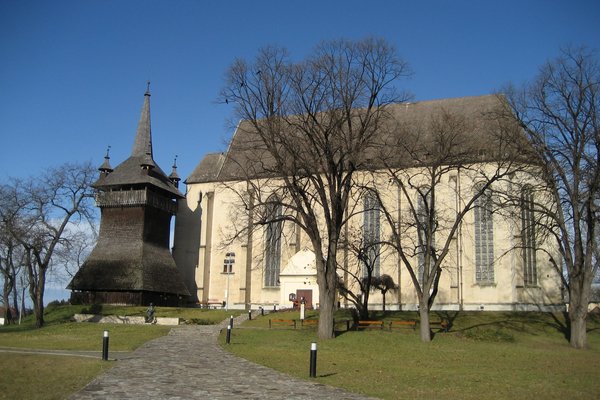Hungary
Wooden bell-towers in the Upper Tisza-Region
The Wooden bell-towers in the Upper Tisza-Region are the only in situ remains of this region’s tradition of wooden churches. They date from the 17th and 18th centuries, when Reformed churches were (re)built not in stone but in the cheaper timber. The towers have a slender, Gothic style and are covered with split wooden shingles.
Site Info
Official Information
- Full Name
- Wooden bell-towers in the Upper Tisza-Region (ID: 6268)
- Country
- Hungary
- Status
-
On tentative list 2017
Site history
History of Wooden bell-towers in the Upper Tisza-Region
- 2017: Added to Tentative List
- Added to tentative list
- Type
- Cultural
- Criteria
Links
- UNESCO
- whc.unesco.org
All Links
UNESCO.org
- whc.unesco.org — whc.unesco.org
Community Information
- Community Category
- Religious structure: Christian
Travel Information
Recent Connections
News
No news.
Recent Visitors
Visitors of Wooden bell-towers in the Upper Tisza-Region
Community Reviews
Show full reviewsClyde
Wooden bell-towers in the Upper Tisza-Region
Wooden bell-towers in the Upper Tisza-Region (On tentative list)

I visited the oak bell tower of Nyírbátor on my way back from my road trip in Romania, Moldova and Bulgaria.
Near the southwest corner of the Calvinist Church in the medieval Hungarian market-town of Nyírbátor, there is a unique 17th century late Renaissance wooden masterpiece of Transylvanian joinery. My visit was a pleasant continuation of the similar wooden architecture in Maramures and in Transylvania. I parked my car near a small synthetic futsal pitch for free just next to the belfry.
The standalone wooden bell tower of Nyírbátor is the oldest and the largest of its kind in Hungary. Its shingled skirting and gallery give the impression of a bastion. With its artistic carvings it is a majestic piece of early 17th century folk architecture. I was lucky that there was a local council outing when I visited so I simply asked politely whether I could climb the belfry to the top and they were more than happy to add another happy visitor.
A steep wooden staircase made up of three straight sections leads up to the bell tower gallery, interrupted by resting floors. The bell house contains two bells hanging on separate belfries. The steep square based roof tops in an octagonal cap. There are four dainty circular turrets on the four corners of the roof structure showing the different restoration years: 1778, 1841, 1889 and 1928. The contemporary bell bears reliefs of the four evangelists. According to the engraved script, it was cast by …
Keep reading 0 comments
